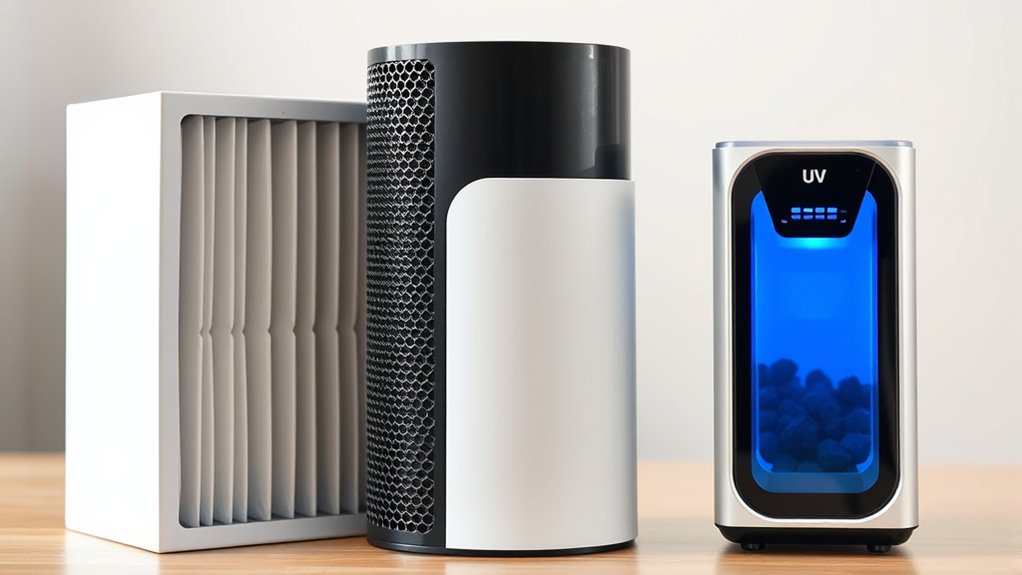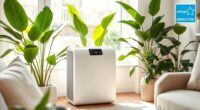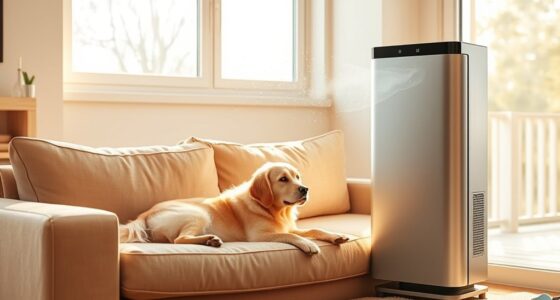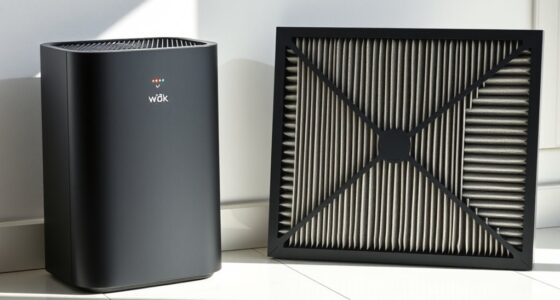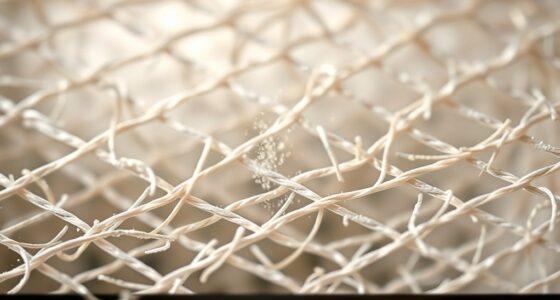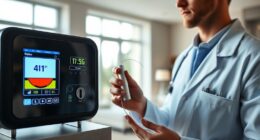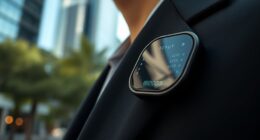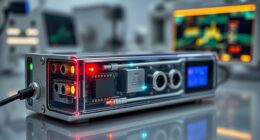HEPA filters excel at trapping dust, pollen, and pet dander by capturing at least 99.97% of particles over 0.3 microns, relying on dense fibers and a maze-like structure. Activated carbon removes odors and chemicals from the air through adsorption, effectively tackling VOCs and smoke. UV light sterilizes airborne germs by damaging their DNA, preventing reproduction. Understanding these differences helps you choose the best solution for your indoor air quality—if you explore further, you’ll uncover how to combine these technologies effectively.
Key Takeaways
- HEPA filters excel at removing airborne particles like dust, pollen, and pet dander, while activated carbon is best for odors and chemical vapors.
- UV light sterilizes airborne pathogens by damaging their genetic material, providing an effective method for reducing microbes.
- Combining HEPA, activated carbon, and UV technologies offers comprehensive air purification for particles, odors, and microbes.
- HEPA filters rely on physical trapping with consistent performance, whereas activated carbon’s effectiveness depends on surface area and pore structure.
- Proper maintenance and replacement are essential for all systems to ensure optimal air cleaning performance.
How HEPA Filters Capture Allergens and Particulates
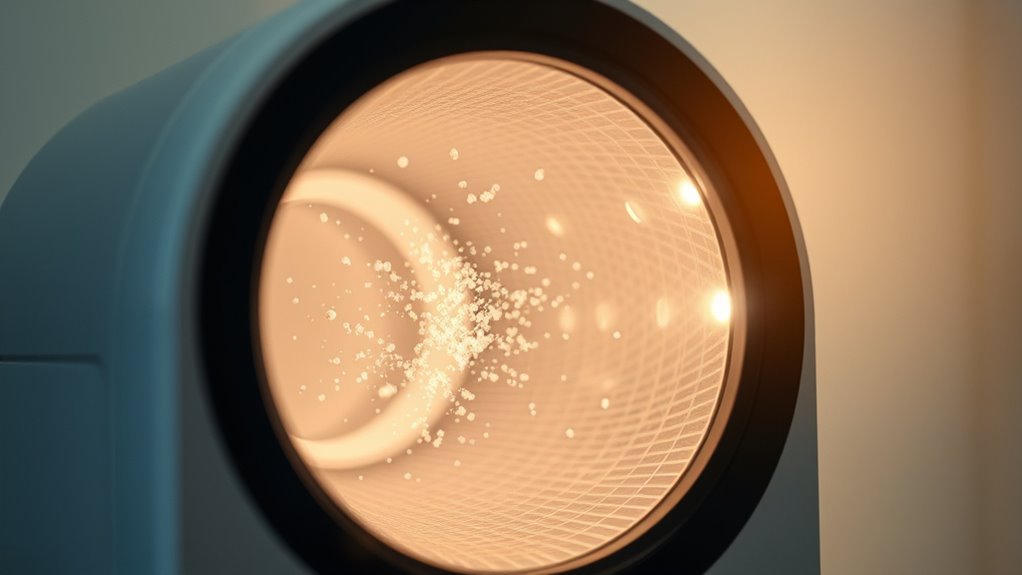
HEPA filters effectively trap allergens and particulates by using a dense mat of fine fibers that capture airborne particles as air passes through. The high HEPA efficiency means these filters can remove at least 99.97% of particles as small as 0.3 microns, including dust, pollen, pet dander, and mold spores. This makes allergen filtration highly effective, especially for allergy sufferers. The fibers create a complex maze that forces airborne contaminants to collide and stick, preventing them from recirculating in your space. Because of their design, HEPA filters maintain consistent performance over time, providing reliable air purification. Additionally, ongoing AI safety research emphasizes the importance of developing advanced safety measures to prevent potential vulnerabilities in filtration technologies. If you’re seeking a proven method to reduce allergens, HEPA filters are among the most trusted options available.
The Role of Activated Carbon in Odor and Chemical Removal
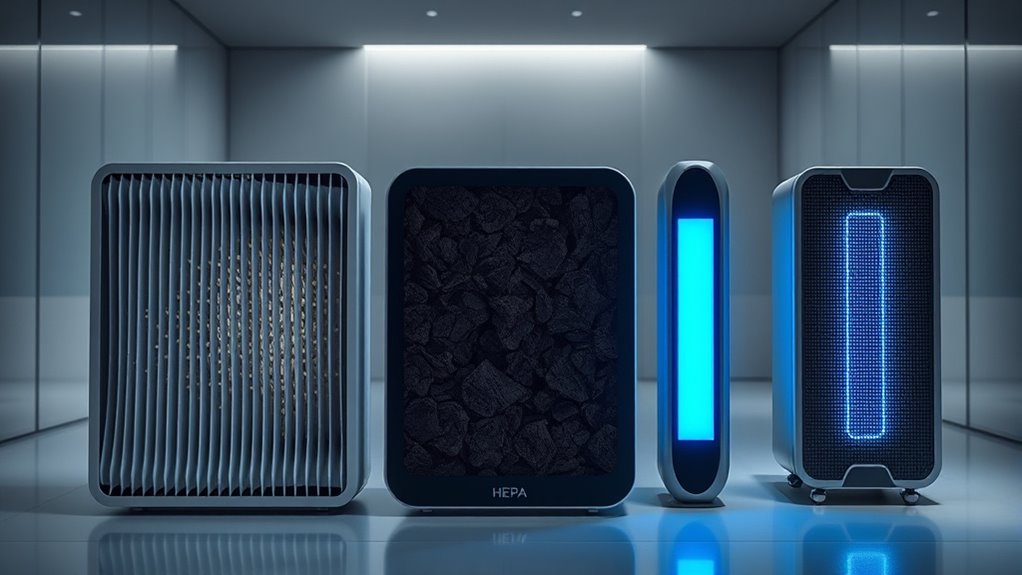
Activated carbon plays a crucial role in removing odors and chemical pollutants from the air by adsorbing molecules onto its porous surface. Its high adsorption capacity allows it to trap a wide range of volatile organic compounds (VOCs), smoke, and gases effectively. This makes activated carbon an essential component for chemical filtration, especially in environments with strong odors or chemical fumes. This process is similar to how wickless candle making utilizes porous materials to contain and release fragrances, highlighting the importance of surface area in containment and release. As air passes through, contaminants adhere to the carbon’s surface, preventing them from circulating. Its porous structure provides a large surface area, enhancing its ability to capture pollutants. Because of this, activated carbon is particularly useful in eliminating stubborn odors and chemical vapors that other filters may miss. Overall, it’s a powerful tool for improving indoor air quality by targeting specific airborne chemicals.
The Effectiveness of UV Light in Sterilizing Airborne Pathogens
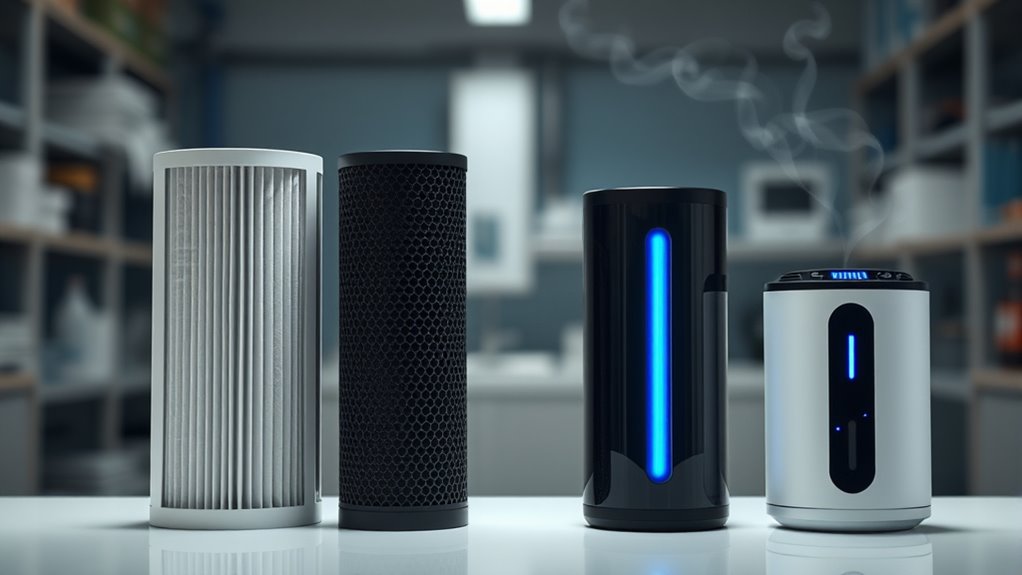
Ultraviolet (UV) light has proven to be an effective method for sterilizing airborne pathogens by damaging their DNA and RNA, rendering them unable to reproduce or cause infection. UV sterilization targets microorganisms directly, ensuring efficient pathogen inactivation. Here’s how it works:
- UV light emits at specific wavelengths that penetrate airborne microbes.
- The radiation damages their genetic material, preventing replication.
- This process rapidly reduces the number of viable pathogens in the air.
- UV air purifiers are especially useful in healthcare and high-traffic areas.
Frequently Asked Questions
How Do Maintenance Requirements Differ Among HEPA, Carbon, and UV Air Purifiers?
You’ll find that HEPA filters need regular filter replacement every 6 to 12 months, depending on usage. Carbon filters require more frequent cleaning or replacement, often every 3 to 6 months, to maintain odor absorption. UV purifiers generally need only occasional cleaning of bulbs and replacement every 12 months. Maintaining with filter replacement and cleaning frequency ensures your air purifier works efficiently and keeps your air clean.
Which Air Purifier Technology Is Most Energy-Efficient for Long-Term Use?
Did you know that UV air purifiers typically use 50% less energy than HEPA or carbon filters? When considering long-term use, UV technology is often the most energy-efficient, helping you save on operational costs. Its lower energy consumption reduces your electricity bills, making it a smart choice for ongoing air quality maintenance. So, if you’re focused on efficiency and savings, UV air purifiers could be your best option.
Are There Health Risks Associated With UV Light Exposure in Air Purifiers?
You might wonder if UV light exposure in air purifiers poses health concerns. Generally, UV-C light used in these devices is contained within the unit, so you’re not directly exposed. However, improper use or damaged units could potentially cause UV exposure, leading to skin or eye irritation. To stay safe, always follow the manufacturer’s instructions and make certain the UV light is securely enclosed, minimizing any health risks associated with UV exposure.
Can Combining These Technologies Improve Overall Air Purification Effectiveness?
It’s funny how we think one technology can handle all our air worries. Combining HEPA, carbon, and UV creates a multi technology synergy that boosts purification enhancement. You get particles filtered, odors absorbed, and germs neutralized. This strategic mix tackles a wider range of pollutants more effectively, making your air cleaner and healthier. So yes, blending these methods can truly enhance your air quality, proving teamwork in tech works wonders.
How Do Cost and Lifespan Compare for HEPA, Carbon, and UV Filters?
You’ll find that HEPA filters typically have a higher initial setup cost but offer a longer lifespan, requiring filter replacement every 6-12 months. Carbon filters are more affordable upfront but need frequent replacements, around every 3-6 months. UV filters tend to be less expensive initially but may have a shorter lifespan, with bulbs needing replacement every 12 months. Consider these factors to balance cost and maintenance for your air purifier.
Conclusion
So, which air purifier will truly protect you? HEPA filters trap allergens, activated carbon tackles odors and chemicals, and UV light sterilizes airborne pathogens. But is one enough, or do you need a combination? The choice could shape your health and peace of mind—now or in the future. Stay tuned, because uncovering the perfect solution might just change how you breathe every day. Are you ready to make the right choice?
